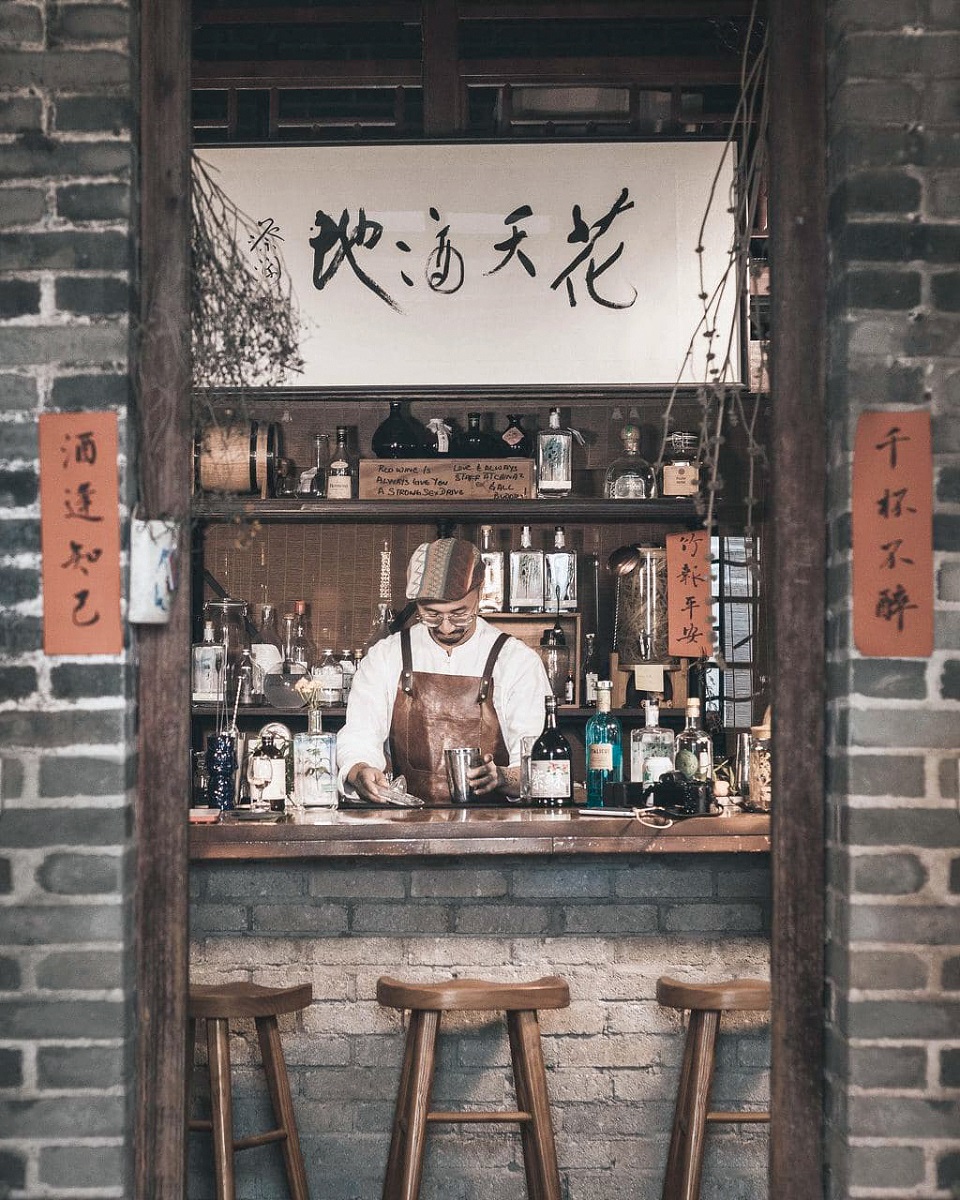
If our words were gin…
Thanks to Haruki Murakami's If Our Words Were Whiskey, many of us who rarely drink have dreamt of basking in Ireland's aromatic air. In recent years, a new wave of passion for handcrafted alcohol has emerged everywhere around the world. At the centre of that wave is gin.
The first gin that comes to mind may be "London Dry Gin". Different to Scotland's whiskey, London Dry Gin is not limited to any specific place of origin. Gin encompasses re-distillation of a base spirit with natural botanicals, predominantly juniper berries, in a traditional distillery. With such an open production process, distilleries from different places capitalise on experimenting with infusing local flavors.

What does it mean to infuse local flavors? In "The Botanist", Scottish distillery Bruichladdich uses 22 out of the 31herbal plants found on the island of Islay, crafting a unique taste from local ingredients. Similarly, "Roku Gin" from Japanese distillery Suntory imbues six ingredients from different seasons, from spring's cherry blossoms and their leaves and summer's hojicha and gyokuo green tea to autumn's shansho and winter's yuzu skin, each extracted at the peak of the season to cultivate an oriental flavor. To respond to our question earlier, "botanicals" and "flavors of our imagination" seem to be the answer.
If every place has its own flavor; if our words were gin...
Hong Kong distilleries take on local flavours
Two Moons Distillery
Professional methods to produce high quality gin is the key to crafting local flavors.
Another local distillery, Two Moons Distillery strives to produce local London Dry Gin. Their distillery, made in Germany by Müller Stills, is called "Luna", taking reference from the curved top of the distilier. The curved design increases contact between the alcohol and copper, thereby increasing reflux to minimise impurities and taste of sulphur. To create Hong Kong's own London Dry Gin, Two Moons Distillery selects ingredients from around the world, including fresh lemon peels. rose petals, tangerine peels. pink peppercorns, tonka beans, madagascan herbs, apricot kernels. Italian juniper berries, coriander seeds, cardamom, liquor rice roots and iris.

N.I.P Distilling
Producing locally is the key to crafting local flavors.
To N.I.P Distilling, setting up a local distillery is the key to crafting local flavors. In 2017. founders Nie Law and Jeremy Li travelled to Scotland's Strathearn Distillery to work, gaining qualifications as professional distillers and learning how to run a distillery. Returning to Hong Kong, they started their own distillery in Quarry Bay. Over sixteen months, they collaborated with Christian Carl, German manufacturer of artisan distilleries, to design a distillery suited for the Hong Kong environment, naming it "April". Aside from juniper berries, N.I.Puses a diverse range of oriental botanicals such as tangerine peels and wolfberries, as wellas Shoumei and Longjing tea. They hope to introduce the model of artisanal distillery to Hong Kong, creating gin with Hong Kong flavors to reconsider the possibilities with producing locally.

Perfume Trees Gin
Infusing local customs and traditions is the keyto crafting local flavors.
To Perfume Trees Gin, traditional flavors and local customs are key to crafting a truly Hong Kong taste. In addition to the basic ingredients, they add ingredients with a sense of history, such as white champaca from Lam Tsuen's farm, 15-years- old tangerine peels from Sai Wan's tramways, quality Long jing tea from Kowloon city and sandalwood from Wing Lee Co on Shanghai Street. At their studio at Pat Heung, the essence of white champaca and other plants are extracted and sent to the Netherlands for distillation. In blending the aromas of botanicals, Perfume Trees Gin hopes to capture a nostalgic taste of Hong Kong.

You May Also Like...

This site uses cookies. Please indicate your consent. Learn more here.













